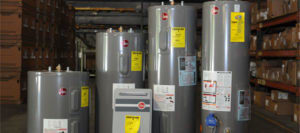What is water hammer?
Water hammer is usually recognized by a banging or thumping in water lines. Although it might seem to be a smooth flow, the water inside the pipe actually churns and tumbles as it moves through. The normal sound of water moving through pipes is a steady, even sound. The best way to know what it sounds like is to go turn the bathtub water on full blast, then go to other rooms of the house and listen.
How to identify water hammer
Water hammer can be a big thump that shakes the house, or a series of banging noises starting with a loud bang followed by several “echoes”. Rapidly closing or opening a valve causes pressure transients in pipelines. If the noise occurs when you open a valve or a faucet, it is probably air in the pipes. If it occurs when a valve closes or the washer changes cycles, it is probably water hammer. If it occurs when a pump starts, it could be water hammer, air in the pipes, or both. Although opening valves can sometimes create water hammer, this typically only occurs with valves larger than 3″ in size, and even then it is reasonably rare.
Find the source of your water hammer
The first variable is the length of the pipe the water is traveling through. We can’t do much about the length of your pipes, assuming that you can’t move your house closer to the water source. But it is an important factor in creating water hammer, so it is useful to take a look at it, especially as it relates to the pipe size. For example, in some situations you can force a high rate of flow through a small pipe without problems, provided the length of the pipe is short, say, a few feet. The shorter the pipe, the smaller it can be. Knowing this will help you when you try to identify the source of the water hammer. So keep in mind that a small pipe may not be a problem if it is a very short length.
The second variable is time, or specifically how fast the water is being stopped. When a closing valve is causing water hammer, time is how long it takes for the valve to close. Most irrigation valves take several seconds to close. Theoretically this would not cause a problem, as several seconds is very slow when dealing with water hammer. The valve may take a few seconds to go from full open to full closed, but it has a tendency to snap closed. Realistically the actual closing time of a typical irrigation solenoid valve is around 1/2 to 1 second. But it varies greatly, even when testing the same valve. For example, an irrigation valve closes much faster if there is higher water pressure present. It also closes faster as you increase the flow through the valve (increasing the flow creates a greater pressure differential across the valve, which causes it to close faster.) So a valve that would not cause a water hammer problem at a low flow and low pressure, will cause all kinds of problems if you increase the flow through the valve and/or the water pressure.
The third factor that influences water hammer is the velocity of the water. The faster the water is traveling in the pipe, the greater the water hammer. It is this last factor which is easiest for us to correct in a sprinkler system, so most of the suggested solutions for water hammer will be aimed at reducing the water velocity.
How to control water hammer
The most effective means of controlling water hammer is a measured, compressible cushion of air which is permanently separated from the water system. Water hammer arresters employ a pressurized cushion of air and a two o-ring piston, which permanently separates this air cushion from the water system. When the valve closes and the water flow is suddenly stopped, the pressure spike pushes the piston up the arrester chamber against the pressurized cushion of air. The air cushion in the arrester reacts instantly, absorbing the pressure spike that causes water hammer.
Find the source of your water hammer
The first variable is the length of the pipe the water is traveling through. We can’t do much about the length of your pipes, assuming that you can’t move your house closer to the water source. But it is an important factor in creating water hammer, so it is useful to take a look at it, especially as it relates to the pipe size. For example, in some situations you can force a high rate of flow through a small pipe without problems, provided the length of the pipe is short, say, a few feet. The shorter the pipe, the smaller it can be. Knowing this will help you when you try to identify the source of the water hammer. So keep in mind that a small pipe may not be a problem if it is a very short length.
The second variable is time, or specifically how fast the water is being stopped. When a closing valve is causing water hammer, time is how long it takes for the valve to close. Most irrigation valves take several seconds to close. Theoretically this would not cause a problem, as several seconds is very slow when dealing with water hammer. The valve may take a few seconds to go from full open to full closed, but it has a tendency to snap closed. Realistically the actual closing time of a typical irrigation solenoid valve is around 1/2 to 1 second. But it varies greatly, even when testing the same valve. For example, an irrigation valve closes much faster if there is higher water pressure present. It also closes faster as you increase the flow through the valve (increasing the flow creates a greater pressure differential across the valve, which causes it to close faster.) So a valve that would not cause a water hammer problem at a low flow and low pressure, will cause all kinds of problems if you increase the flow through the valve and/or the water pressure.
The third factor that influences water hammer is the velocity of the water. The faster the water is traveling in the pipe, the greater the water hammer. It is this last factor which is easiest for us to correct in a sprinkler system, so most of the suggested solutions for water hammer will be aimed at reducing the water velocity.
How to control water hammer
The most effective means of controlling water hammer is a measured, compressible cushion of air which is permanently separated from the water system. Water hammer arresters employ a pressurized cushion of air and a two o-ring piston, which permanently separates this air cushion from the water system. When the valve closes and the water flow is suddenly stopped, the pressure spike pushes the piston up the arrester chamber against the pressurized cushion of air. The air cushion in the arrester reacts instantly, absorbing the pressure spike that causes water hammer.
Solutions for Water Hammer Caused by Washing Machines and Dishwashers
If the noise occurs when a washing machine or dishwasher valve closes the problem is that the appliance is demanding more water than one or more of the pipes supplying to it can safely handle.
This is the cheapest solution but not really the best. Try partially closing the shut-off valve for the appliance. Start by closing it half way. If that doesn’t get rid of the noise close it a little more, keep repeating until the noise stops. Closing the valve reduces the flow to the appliance, and thus reduces the velocity in the pipes. Unfortunately many dishwashers and washing machines use a fill timer rather than actually measuring if the washer is full. Sometimes when you close the valve partially the washer doesn’t get enough water and the clothes or dishes don’t get clean. So check to see if closing the valve is creating cleaning problems. If it is, reopen the valve a little and try again.
There should be a short tube that leads from the shutoff valve to a appliance. Often this tube is a piece of 1/2″ hose or a 3/8″ copper tube. This tube should not be more than three or four feet long, if it is longer the tube may be part of the problem, so try replacing it with a larger tube.
The next trick to try is installing a AA-size water hammer arrester on the pipe at the shut-off valve. While these devices are seldom useful for irrigation systems, they often do work with appliances because the water demand is not nearly as high as a sprinkler system. You can get a water hammer arrester at just about any plumbing supply store. At your local hardware or home store look for a pre-packaged water hammer arrestor that attaches to a standard washing machine cold water outlet. The ones I have seen come in one of those clear plastic display packages, and look like a copper tube with hose connections. Make sure you keep all the packaging. Install it per the directions on the package. If you are installing it on a dishwasher fill, you will probably need some adapters to make it fit. If it doesn’t work, remove it and return it.
Air chambers are pretty much worthless, none of the building codes recognize them any more for water hammer control. An air chamber is just a long section of vertical tube with a cap on the top of it. The idea is that air is trapped in the tube and absorbs the water hammer shock. They may work for a while, but they become water-logged with time. They also need to be huge, generally at least 3/4″ size and several feet long.
The last option is to tear out the walls or floors and install a new, larger pipe to the appliance. Before you do that run a test. Get a 3/4″ heavy duty garden hose. It will cost a lot, but at least you can reuse it in the garden. Hook up one end to the flush outlet on your water heater, and connect your appliance to the other end. Then run the appliance, the water hammer should be gone. If the water hammer is still there, then the pipe in the wall is not the problem.






